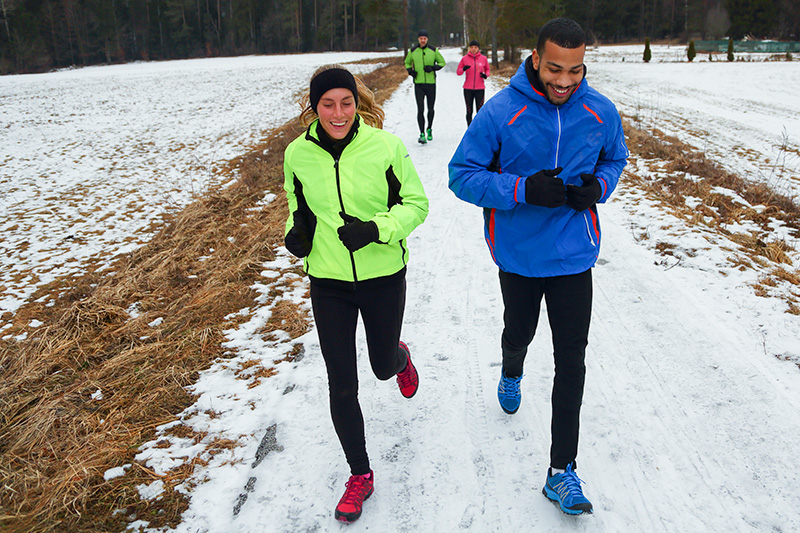How to avoid winter sports injuries

Cold winter winds and temperatures don’t have to keep you indoors until the first sign of spring. With the right preparation, winter sports can become an enjoyable part of the season.
Though heat injuries are more common than cold, spending time outdoors playing winter sports can present its own challenges and injury risk.
“With winter sports,” says Gregory Bentz Jr., MD, Assistant Professor of Family and Community Medicine at EVMS, “we often see injuries from skiing and snowboarding, especially concussions and knee injuries.” He also sees common sports injuries including concussions, sprains, strains, ligament tears, fractures, and overuse injuries like Osgood-Schlatter disease.
Simply taking a stroll outdoors following a cold rain can be dangerous. As temperatures drop, doorsteps, driveways and sidewalks may develop an invisible covering of ice. When icy surfaces cannot be avoided, experts recommend waddling like a penguin: point your feet out slightly, bend knees, walk flat-footed, extend arms to maintain balance and shuffle or take short slow steps for stability.
Both children and adults are vulnerable to winter injuries from exposure to freezing temperatures and cold and damp environments. If you decide to venture out into the cold, now is not the time to take chances, says Dr. Bentz. “It is essential to know your expertise level and ensure helmets are worn during these activities. Stay within your comfort zone both on and off the slopes.”
When is it too cold to exercise or play sports outdoors? Even a somewhat mild temperature of 50°F may contribute to injury. Temperatures lower than 50°F put people at a higher risk of hypothermia. However, cold injury can occur at higher temperatures, so pay close attention to temperature fluctuations.
If hypothermia occurs due to cold exposure, it may become a medical emergency. The skin of the hands, feet, ears and nose are vulnerable to the elements and can develop frostnip or frostbite. Also, people with asthma need to be conscious of symptoms during cold months, as cold air can be a trigger for an asthma attack.
To reduce the chance of winter sports injury, stay hydrated. Avoid alcohol and drink lots of water during and after any activity. Also, dress appropriately for the activity. Gear should include:
- gloves
- earmuffs
- sturdy footwear
- goggles
- insulating layer such as fleece or wool
- outer layer which is water- or windproof
- protective gear like crash pads or a helmet
If an injury does happen, seek medical help. Delaying care can lead to longer healing times, more time away from sports or even more complications worse than the initial injury.
To make an appointment with Dr. Bentz, visit EVMS Sports Medicine or call 757.397.6344.